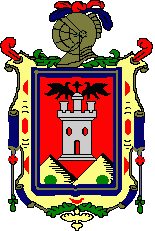San Agustin church
The Spanish architect Francisco Becerra, who was in Quito at the time, drew up two plans for the church and convent of San Agustin, around the year 1580 or 1583.
A contract was signed in 1606 with the Spanish architect Juan del Corral, who was married to a girl from Quito, for the construction itself. When the building was complete, the high altar-piece was brought from Rome, and the side altars were carved. This was all finished by 1650. According to the inscription over the main entrance, the facade was completed between 1659 and 1669. The cloisters were built at the same time, and Miguel de Santiago painted the beautiful pictures of the life of St.
Augustine, on huge canvasses 9 feet by 6. He took the engravings of the Flemish artist Bolswert as a model, and gave them life, color and atmosphere. In addition to this series of paintings, there is another very important work of the Quitan school, also by Miguel de Santiago, the painting known as the Rule, 24 feet by 18, which is over the presbytery.
But there are man v more admirable things in San Agustin: a wealth of' original details in the columns of the altar-pieces of the church, the beauty of the cloisters with their two-level galleries, and the Chapter Hall. The door to the Chapter Hall is half-way down the eastern side of the cloister, and it was in this hall that the Act of August 10th, 1809 was signed. It contains a fine crucifix by Olmos, a Quito artist of the early eighteenth century, and on the other side is the tribune for the speaker or reader, beautiful carved and covered with precious shell and fine fretwork.
The vault also is covered with paintings, including a series of hagiographic motifs, sixteen on either .side. The paintings of the death of St. Augustine and of St. Jeronimo are by Miguel de Santiago, and there is a pietá, probably, by Ribalta. The church and the cloister of San Agustin church, with all the works of art so far mentioned, and many others besides, is one of the high points of colonial Quito art.

